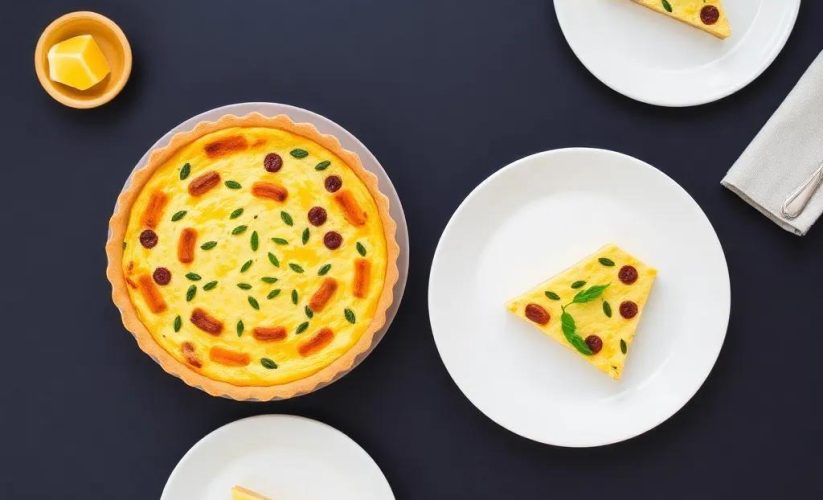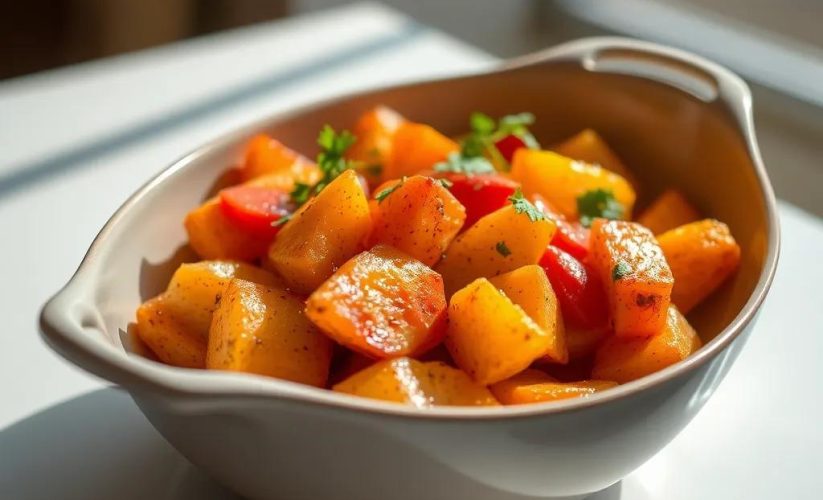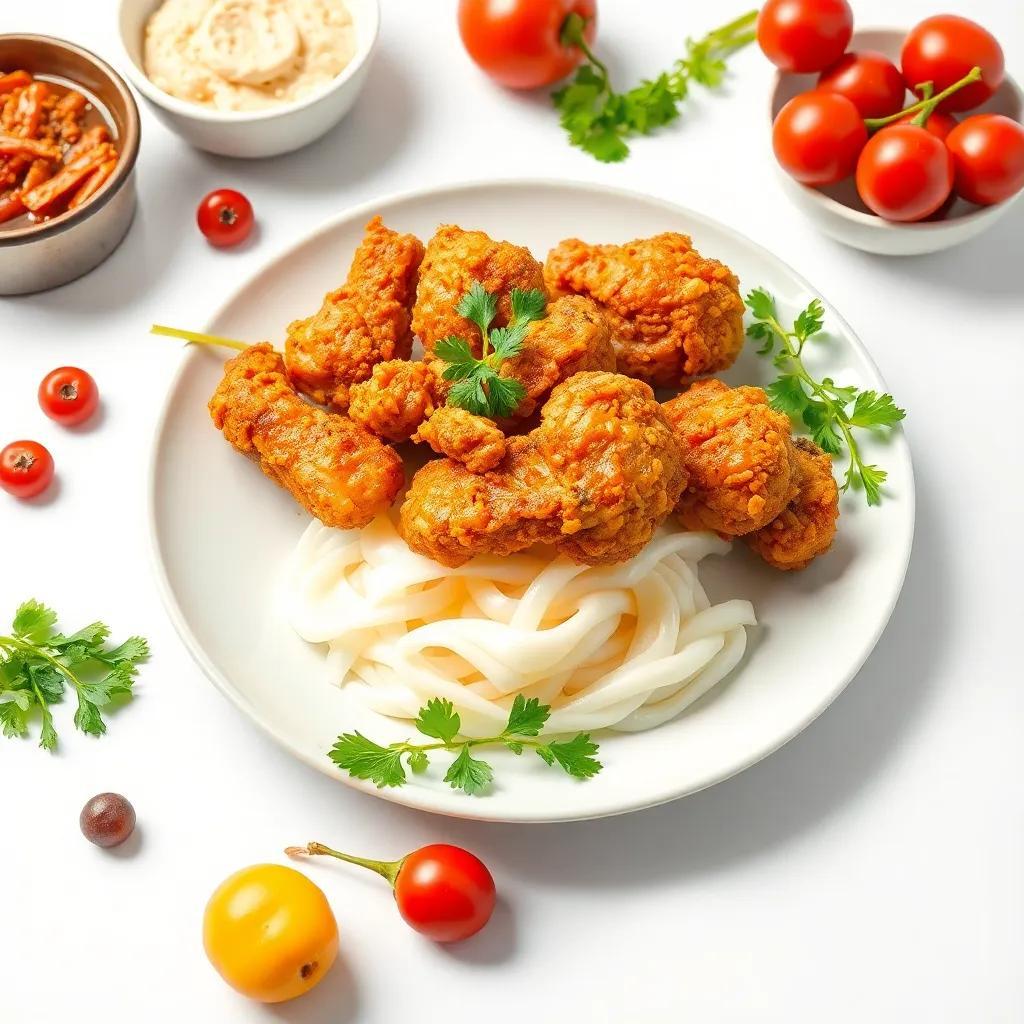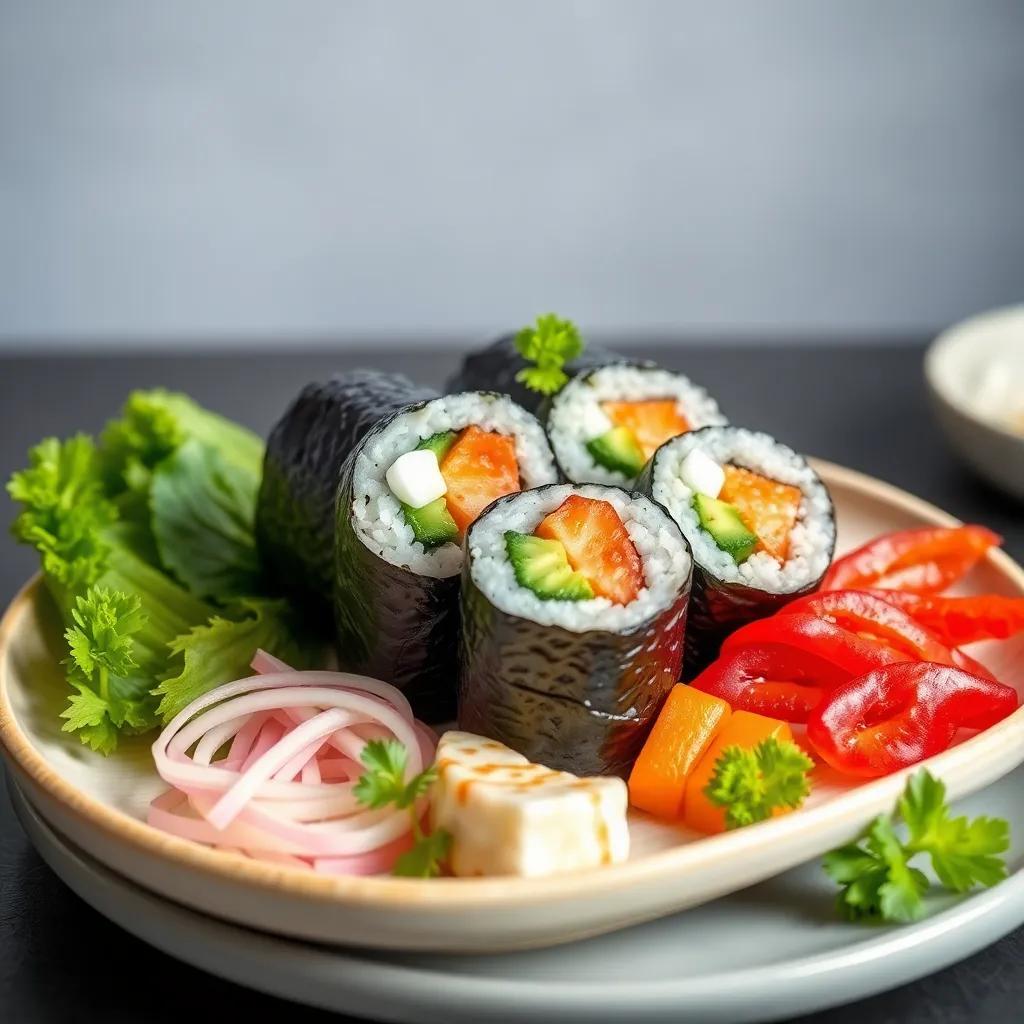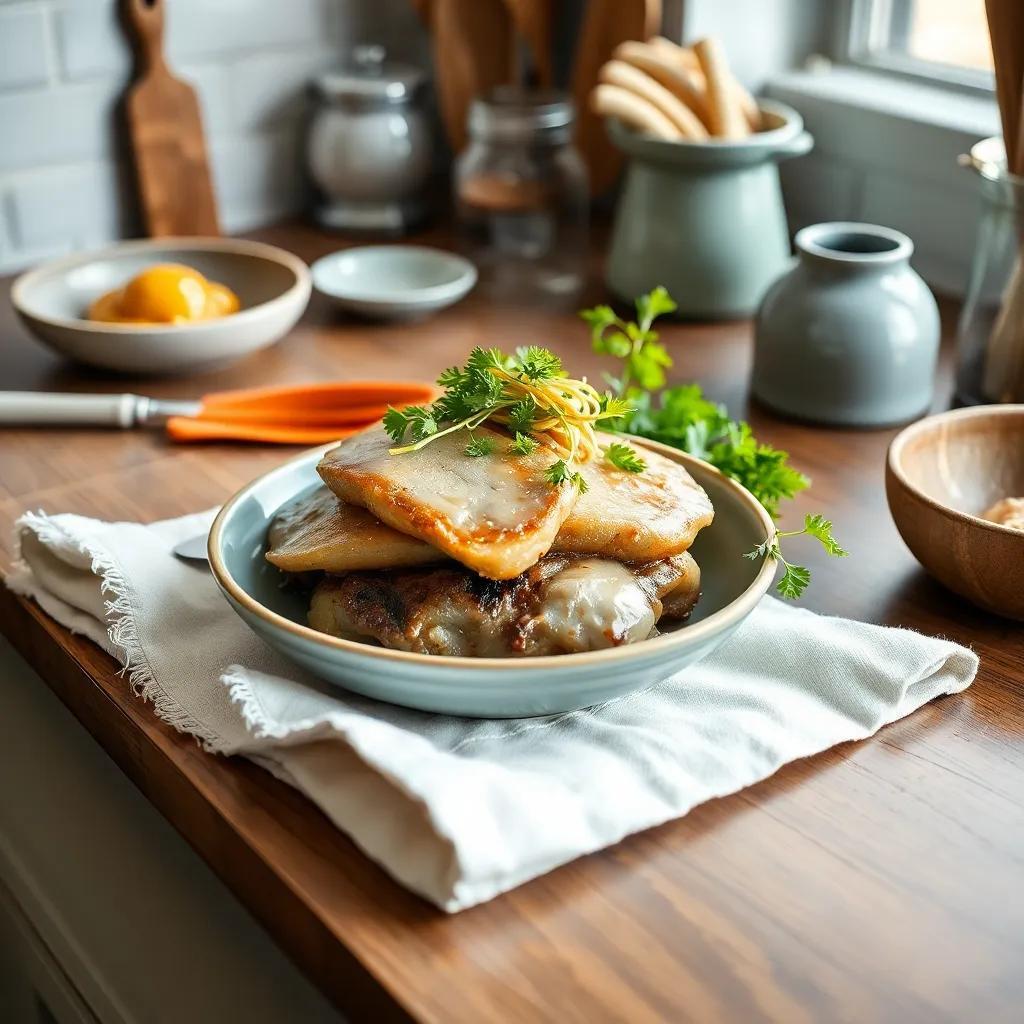Ultimate Sundubu Jjigae Recipe: Easy, Spicy Korean Tofu Stew Guide
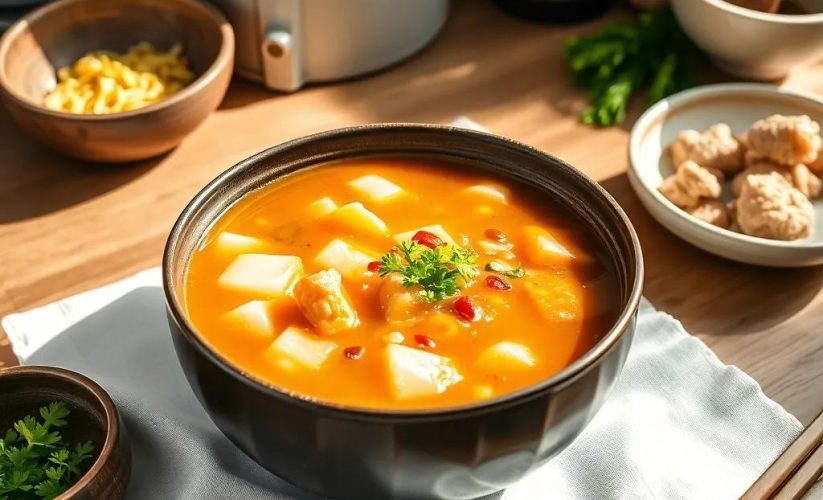
Ultimate Sundubu Jjigae Recipe: Easy, Spicy Korean Tofu Stew Guide
🌍 Cuisine: Korean
⚙️ Difficulty: Easy
Ingredients
Nutrition Facts
300 kcal
Instructions
- Heat the vegetable oil in a heavy-bottomed pot or Korean earthenware stew pot over medium heat.
- Add minced garlic and sliced onions, sauté until fragrant and translucent, about 2-3 minutes.
- If using, add pork belly or beef slices; cook until lightly browned.
- Add chopped kimchi if desired, and cook for another 2 minutes to infuse flavor.
- Stir in gochugaru (Korean chili flakes) and gochujang (Korean chili paste) and cook for 1 minute, stirring constantly.
- Pour in the anchovy or vegetable broth and bring to a boil.
- Carefully add the soft/silken tofu in large spoonfuls, distributing evenly in the pot.
- Season with soy sauce, salt, and pepper to taste. Reduce heat to simmer and cook for 8-10 minutes to allow flavors to meld.
- Drizzle sesame oil over the stew and add chopped green onions.
- If desired, crack an egg directly into the hot stew. Cover and let it cook for 1-2 minutes until the egg is just set.
- Serve hot with steamed rice and side dishes (banchan).
Serving Suggestions
- Serve with a bowl of steamed white rice to balance the spicy stew.
- Accompany with traditional Korean side dishes such as kimchi, pickled radish, or seasoned spinach.
- Add clams or shrimp instead of pork for a seafood variation.
- Top with sliced green chili peppers for extra heat.
- Use a Korean hot stone pot (dolsot) to keep the stew piping hot while serving.
- Pair with a cold Korean beer or soju for a perfect meal experience.
- Add mushrooms like enoki or shiitake for additional texture and umami flavor.
Table of Contents
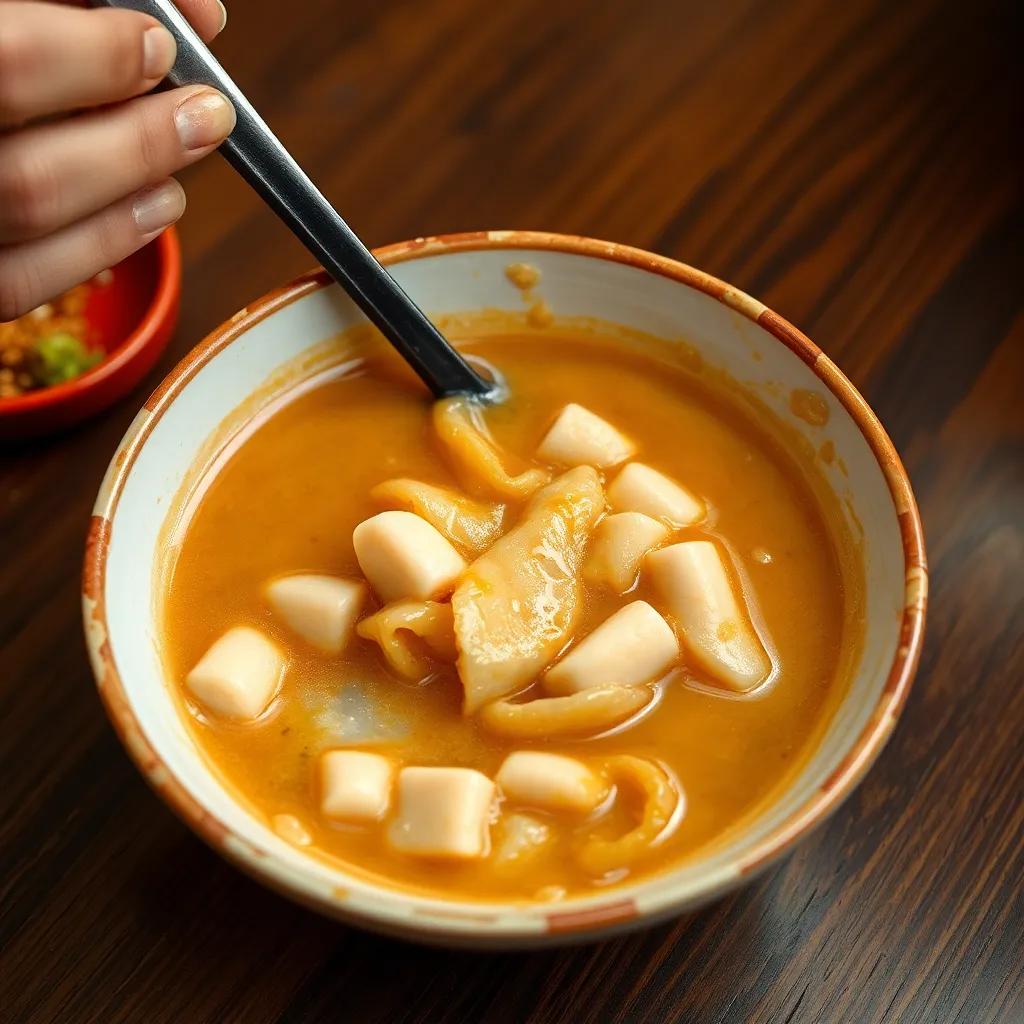
Intro
Warm, comforting, and bursting with bold flavors, sundubu jjigae is the kind of dish that wraps you up in a cozy culinary hug. This spicy Korean tofu stew is not only a feast for the senses but also incredibly approachable for cooks of all levels. Whether you’re seeking a quick weeknight dinner or a meal to share with friends on a chilly evening, sundubu jjigae delivers satisfying heat and richness without demanding hours in the kitchen.
What makes this recipe truly exciting is how it effortlessly balances simplicity with depth. Each spoonful offers a silky texture from the soft tofu, paired with a vibrant kick from the chili elements, making it as thrilling to eat as it is to make. Best enjoyed fresh and steaming hot, sundubu jjigae shines during colder months, casual dinners, or any time you crave a hearty bowl that comforts body and soul alike.
Beyond just a stew, it’s a versatile canvas that welcomes your personal touch and adapts beautifully to what you have on hand. Whether gathered around the table for an intimate family meal or spicing up your solo dinner routine, this recipe invites you to dive in and savor a classic Korean experience right from your own kitchen.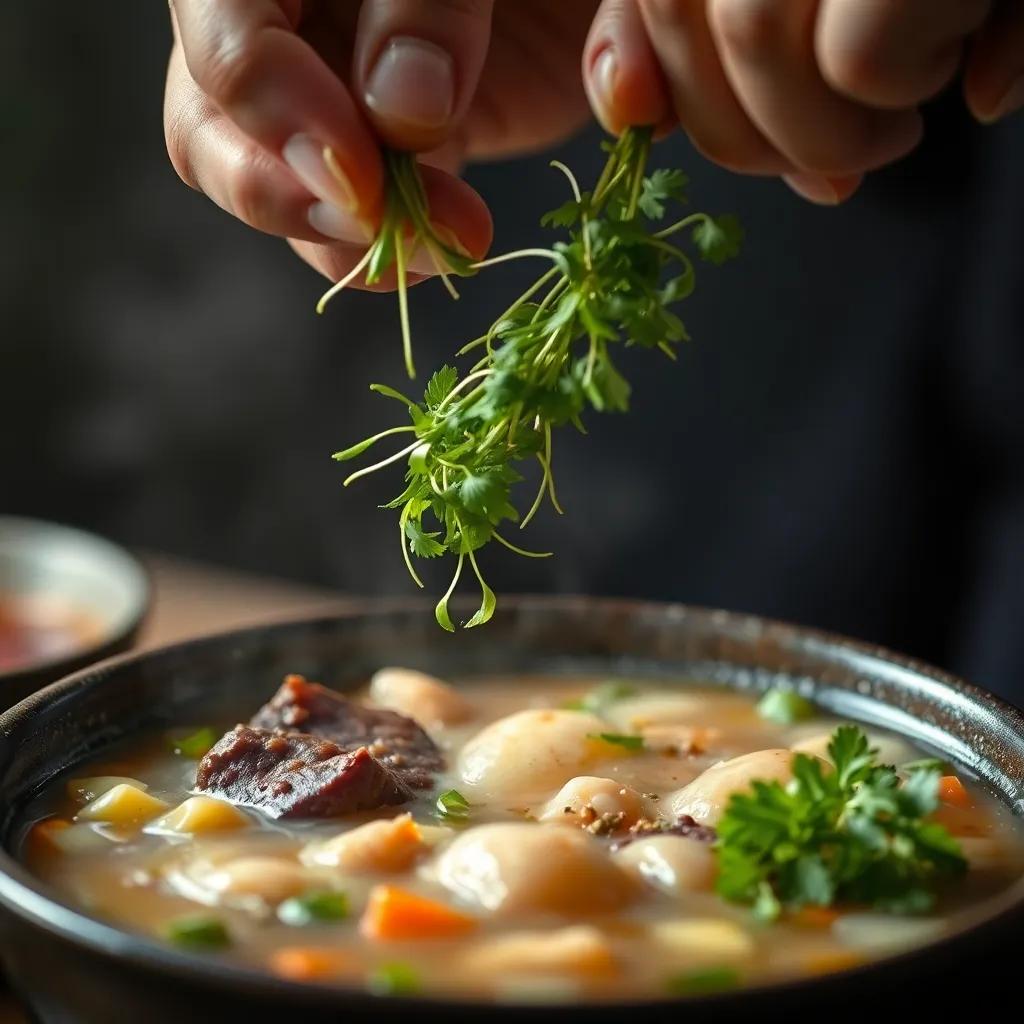
Ingredient Notes
When it comes to crafting the perfect sundubu jjigae, a few standout ingredients deserve special attention because they truly define the character and authenticity of this beloved Korean stew.
Soft/Silken Tofu (Sundubu): The star of the dish, soft or silken tofu has a delicate, custard-like texture that sets sundubu jjigae apart from other tofu stews. Its velvety consistency soaks up the spicy broth without falling apart, creating a luscious mouthfeel that’s both soothing and satisfying. When shopping, look for tofu labeled “silken” or “soft” in Asian grocery stores or well-stocked supermarkets. If you can find Korean sundubu tofu specifically, even better—but a generic silken tofu will work in a pinch. Avoid firm or extra-firm varieties since they won’t deliver that signature silky comfort.
Gochugaru (Korean Red Chili Flakes): These vibrant, smoky chili flakes are essential for building the stew’s signature moderate heat and depth of flavor. Unlike regular chili powder, gochugaru brings a subtle fruity sweetness alongside its spice, contributing complexity to the broth. It’s worth investing in authentic Korean gochugaru for accuracy, but if unavailable, a mix of crushed red pepper flakes with a touch of smoked paprika can provide a rough approximation in a pinch. Always check freshness, as chili flakes lose potency over time.
Gochujang (Korean Chili Paste): This thick, fermented chili paste layers in umami and a gentle sweetness that balances the heat from gochugaru. Gochujang is also rich in fermented soy, which adds complexity and a slight tang to the stew’s flavor profile. Look for a quality gochujang with a bright red color and smooth texture; it typically comes in tubs or squeeze bottles. For those sensitive to spice or wanting a milder stew, start with less and adjust gradually; or substitute with mild red chili paste mixed with a touch of miso for fermentation notes.
Anchovy Broth (or Vegetable Broth): Traditional sundubu jjigae often uses anchovy broth, which imparts a subtle oceanic depth and natural savoriness that beef or chicken broths can’t quite match. Making anchovy broth is straightforward (boiling dried anchovies and kelp), but you can find pre-made versions in Asian markets. If anchovies aren’t your preference, vegetable broth is a perfectly acceptable, lighter alternative that still carries a satisfying warmth—just consider adding a little soy sauce or seaweed to boost umami.
By focusing on these core ingredients, you set the foundation for an authentic and vibrant sundubu jjigae. Each one plays a distinct role in balancing spice, texture, and depth—so sourcing quality versions and understanding their contribution will elevate your stew from simple to sublime.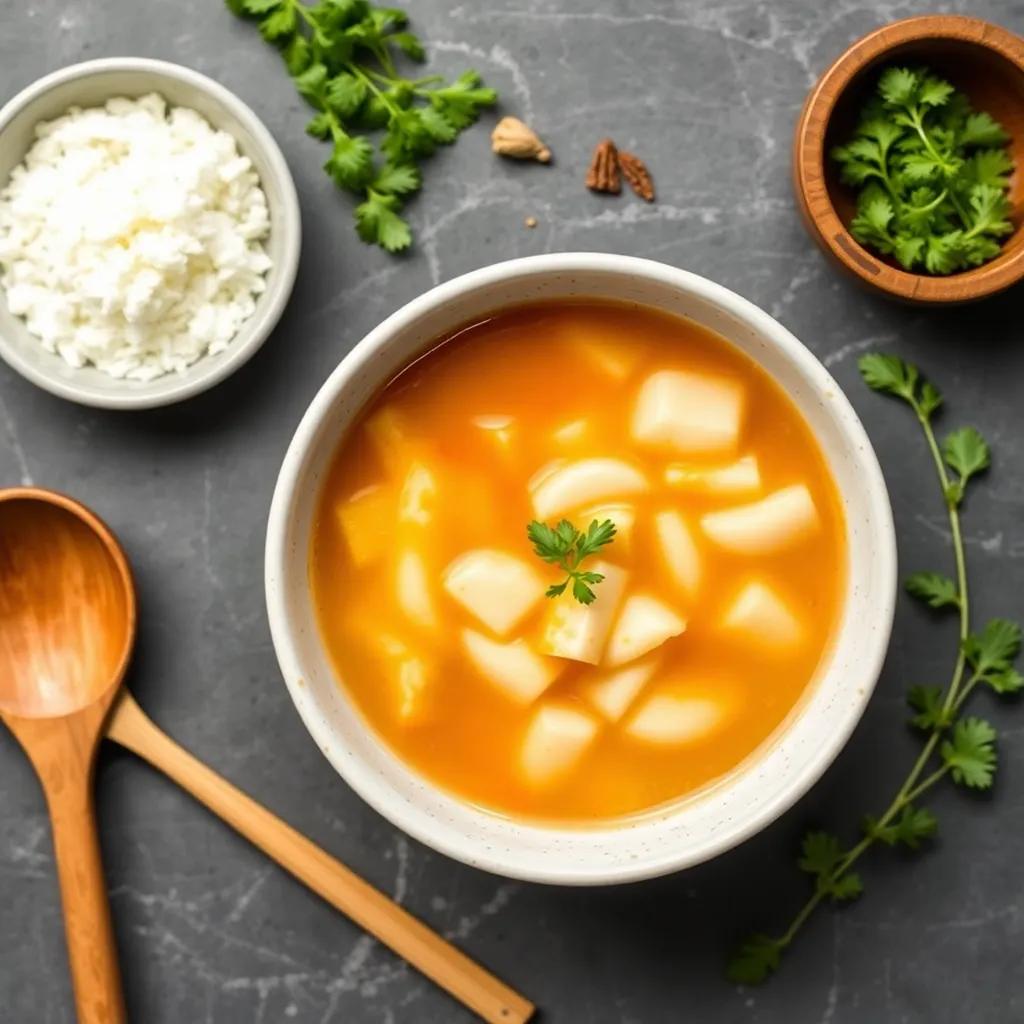
Tips & Variations
Mastering sundubu jjigae means embracing both tradition and creativity—here are some tips and variations to help you make the stew truly your own while ensuring each bowl turns out perfectly:
- Handle the Tofu Gently: When adding soft or silken tofu to the stew, use a large spoon to carefully slide chunks into the simmering broth. Silken tofu is delicate and can easily break apart if stirred vigorously, so avoid excessive stirring to preserve that silky texture.
- Adjust Heat Levels Thoughtfully: The recipe calls for gochugaru and gochujang, but you can tweak the spice to suit your palate. For a milder stew, reduce the gochugaru or omit the gochujang entirely. Conversely, amp up the kick by adding sliced fresh chili peppers or a dash of Korean chili oil (extra virgin sesame oil infused with chili flakes) just before serving.
- Vegetarian or Vegan Adaptations: To make this stew vegan or vegetarian, swap the anchovy broth for a rich vegetable broth flavored with dried shiitake mushrooms and kombu (kelp) to build depth. Omit pork or beef, and double down on mushrooms—like enoki, shiitake, or oyster—to add meaty texture. Use tamari or coconut aminos instead of soy sauce if you want a gluten-free option.
- Protein Variations: While pork belly or beef add richness, this stew is incredibly versatile. Try thinly sliced seafood such as clams, shrimp, or squid for a marine twist. For a plant-based protein boost, toss in cubed firm tofu or tempeh alongside the silken tofu—just keep in mind the differing textures.
- Incorporate More Veggies: Customize the stew by including comforting vegetables that soak up the spicy broth, such as zucchini, mushrooms, napa cabbage, or spinach. Adding vegetables not only enhances nutrition but also creates extra layers of flavor and texture.
- Use Different Broths: The anchovy broth brings authentic umami, but feel free to experiment. Bone broth, chicken broth, or even miso-based broth can transform the flavor profile to match your preference or accommodate dietary restrictions.
- Egg Variations: The classic sundubu jjigae often finishes with a raw egg cracked right into the hot stew, gently poaching it to silky perfection. You can substitute with a soft-boiled egg served on the side or skip the egg to keep it vegan.
- Serve with Complementary Sides: To elevate your sundubu jjigae experience, serve it alongside steamed rice and a selection of mild side dishes (banchan). Pickled radish, garlic sautéed spinach, or lightly seasoned bean sprouts help balance the stew’s heat and richness.
- Make It Ahead with Care: While sundubu jjigae tastes best fresh, you can prepare the broth and base ingredients in advance. Add tofu and egg just before serving for the freshest texture. Reheating gently on low heat prevents the tofu from breaking down too much.
By keeping these tips in mind and experimenting with the variations, you’ll find that sundubu jjigae is as flexible as it is flavorful—a stew that warmly invites your personal spin while honoring its Korean roots.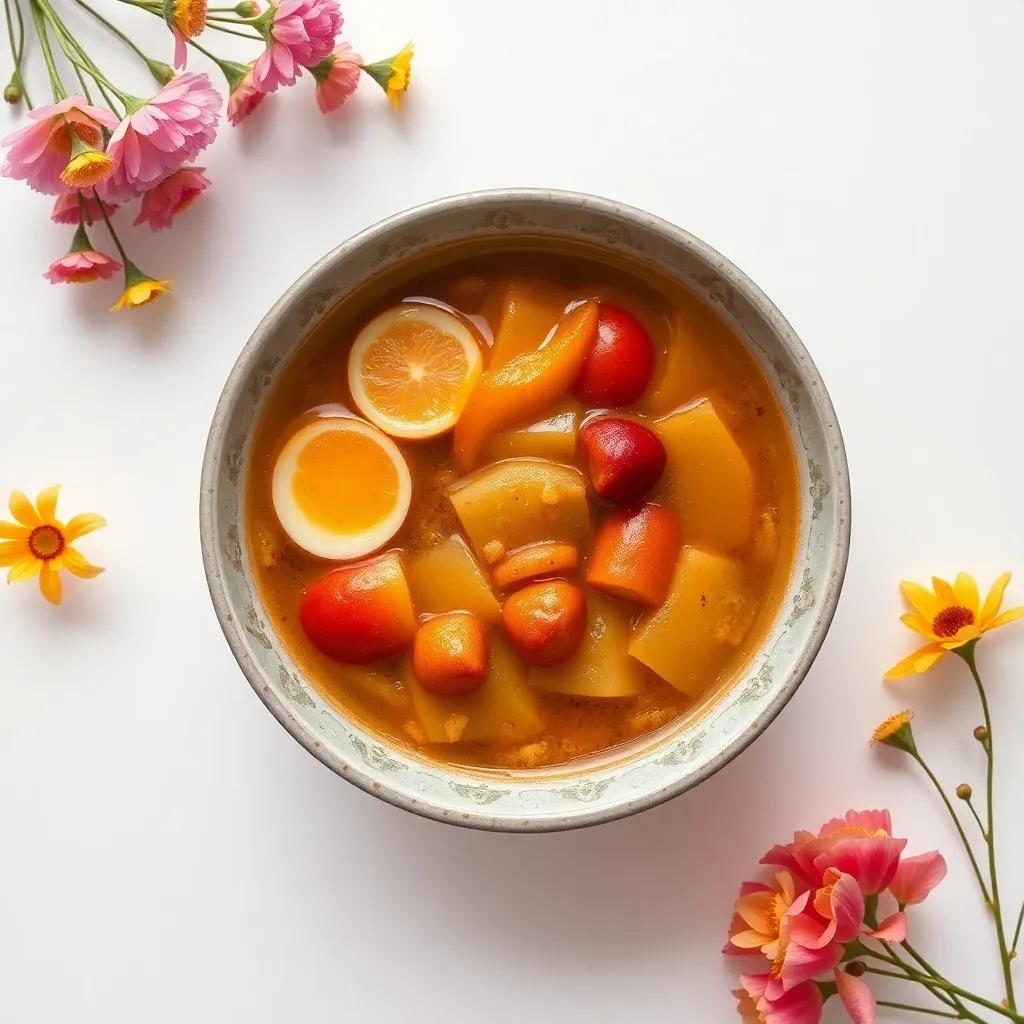
Leftovers & Storage
Leftover sundubu jjigae, while best enjoyed fresh, can still be a comforting treat when stored and reheated properly. Because of its soft tofu base and spicy broth, careful handling during storage is key to preserving its satisfying texture and bold flavors.
For short-term keeping, transfer any remaining stew into an airtight container once it has cooled to room temperature. Glass containers with tight-sealing lids are ideal, as they prevent moisture loss and avoid odor absorption from other fridge items. Stored this way, sundubu jjigae will stay fresh in the refrigerator for up to 2–3 days. If you’ve added an egg, try to consume leftovers sooner for the best quality and safety.
If you want to save your stew for longer, freezing is an option, although soft tofu’s delicate texture may become a bit grainy after thawing. To freeze, portion the stew into freezer-safe containers or heavy-duty zip-top bags, leaving some room for expansion. Label with the date and try to use within 1 month for the best taste. When defrosting, thaw overnight in the refrigerator and gently reheat on low heat to maintain the tofu’s integrity—avoid vigorous stirring to keep the tofu from breaking apart.
Sundubu jjigae also lends itself well to meal prepping. You can prepare the broth, sautéed aromatics, meat (if using), and spicy paste base ahead of time, storing each component separately. Then, when ready to eat, simply combine with fresh silken tofu and heat gently before serving. This approach helps maintain the stew’s vibrant flavors and silky texture, giving you a nearly fresh bowl even on busy days.
When packing sundubu jjigae for lunch or travel, use leak-proof containers and keep the egg separate if included—add it upon reheating to prevent overcooking. Consider pairing with a container of steamed rice or portable banchan for a complete and satisfying meal on the go.
In summary, to make the most of your sundubu jjigae leftovers:
– Cool completely before storing to prevent condensation.
– Use airtight, preferably glass containers for refrigeration (up to 3 days).
– Freeze in portioned containers for up to 1 month; thaw slowly.
– Reheat gently on low heat to preserve tofu texture.
– Store ingredients separately if meal prepping.
– Pack carefully for on-the-go meals, adding delicate toppings fresh.
Following these storage tips will ensure that your leftover sundubu jjigae remains as comforting and delicious as when it first came bubbling off the stove.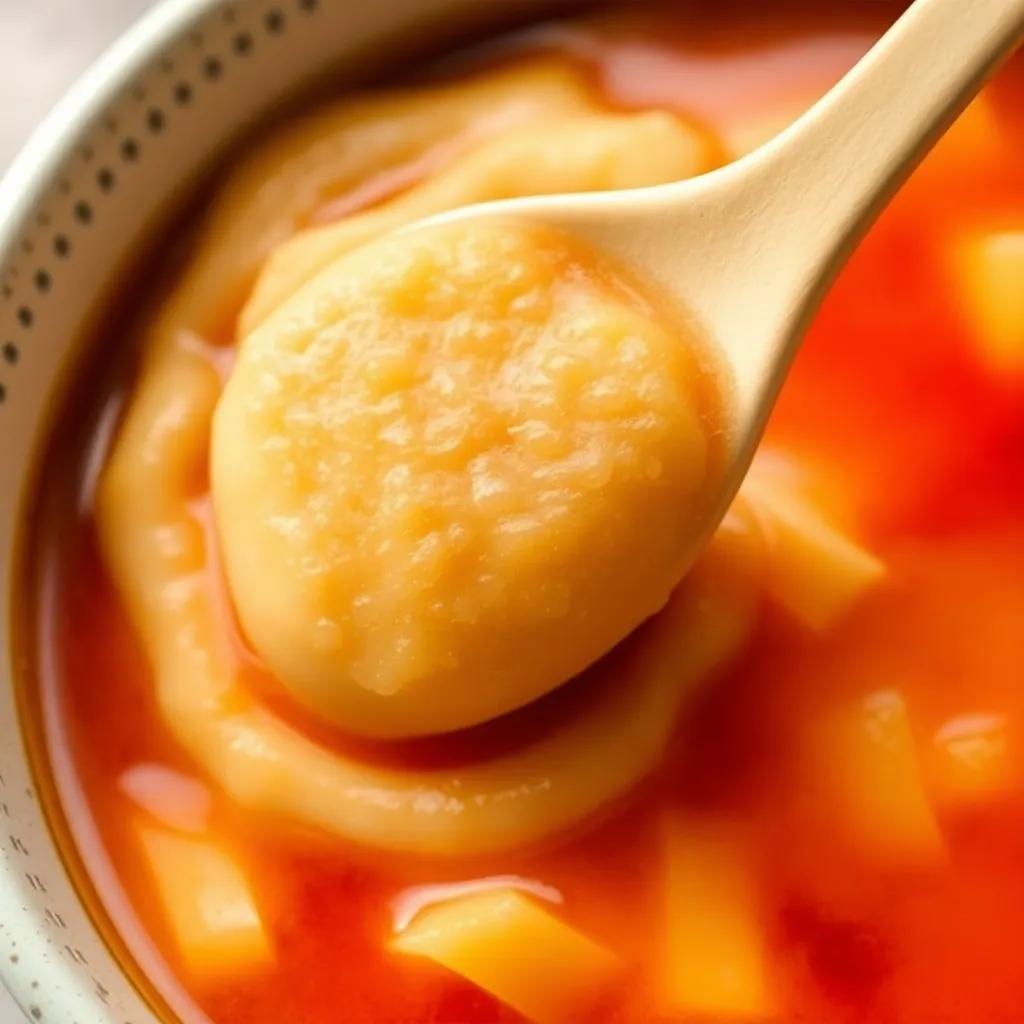
Behind the Recipe
Sundubu jjigae, often translated as “soft tofu stew,” is much more than a flavorful Korean dish—it carries a rich cultural heritage and personal stories in every steaming bowl. Originating from Korean home kitchens, this stew has long been a symbol of warmth and comfort, especially during cold seasons or times when simple nourishment was needed to soothe both body and spirit. Its roots lie in the use of humble, locally available ingredients like silken tofu and gochugaru, which come together to create a dish that’s greater than the sum of its parts.
Traditionally, sundubu jjigae was a practical meal for households that valued quick yet satisfying dishes. The unassuming yet silky soft tofu makes it accessible and gentle on the palate, while the layering of spicy and savory notes through fermented chili paste and broth reflects the Korean culinary philosophy of balancing bold flavors with nourishing simplicity. This combination of heat and softness mirrors the Korean idea of “umami and comfort” at once—a dish that can invigorate without overwhelming.
For many Korean families, sundubu jjigae is a nostalgic dish linked to memories of family gatherings and shared meals around a bubbling pot. The moment when a raw egg is cracked into the hot stew and gently cooks to silky perfection often brings smiles and a sense of ritual to the table. This dish also highlights regional variations and personal touches: some kitchens might add fresh seafood from the coast, while others prefer the richness of pork belly or the tang of kimchi, showing the stew’s versatility and ability to tell countless unique stories.
In crafting this Ultimate Sundubu Jjigae recipe, the goal is to honor both the tradition and the personal enjoyment that has allowed this stew to endure and evolve. By making it approachable and adaptable, the recipe invites you to connect with a dish that has fed generations—not just physically, but emotionally—through its warmth, spice, and simplicity. Whether you’re sharing it with loved ones or savoring a quiet bowl at home, sundubu jjigae becomes a meaningful experience, a taste of Korean culinary heritage served with care and heart.
FAQ
Can I use regular tofu instead of soft sundubu tofu?
What can I use if I don’t have Korean chili flakes (gochugaru)?
Is Sundubu Jjigae suitable for vegetarians or vegans?
How do I store leftover Sundubu Jjigae, and can I freeze it?
Can I customize the spice level in this stew?
What are some good protein substitutions in this recipe?
Do I need special cookware to make Sundubu Jjigae?
Bon Appétit!
There’s something truly comforting about a bubbling pot of sundubu jjigae—its rich, spicy broth and silky tofu come together to create a dish that’s both simple and deeply satisfying. Whether you’re warming up on a chilly evening or craving a bit of bold Korean flavor, this easy recipe invites you to dive in and make it your own.
I’d love to hear how your sundubu jjigae turns out! Feel free to share your twists, rate the recipe, or drop a comment below—let’s keep the delicious conversation going. Here’s to many cozy bowls ahead!

